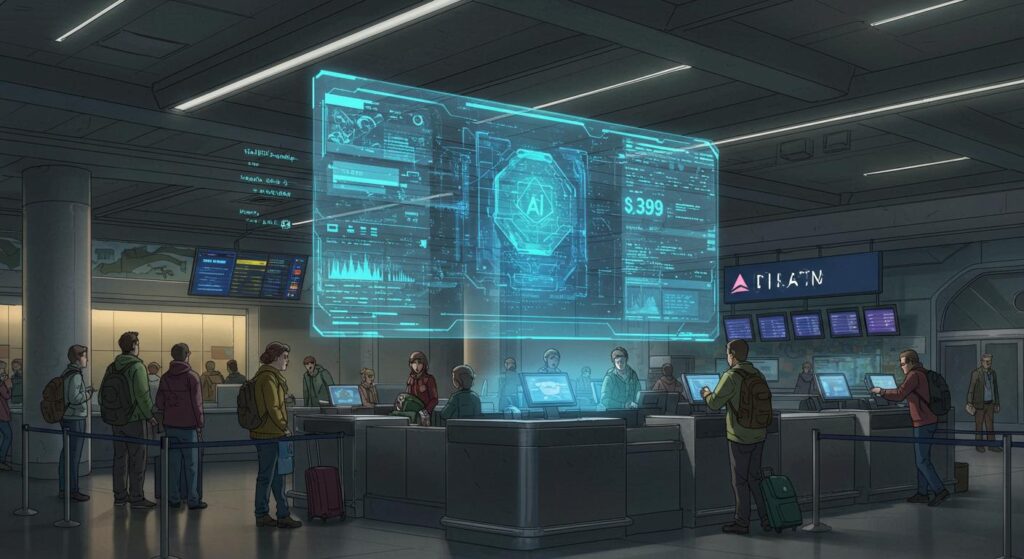If you’ve ever gazed wistfully out an airport window, clutching a smartphone whose operating system updates every third Tuesday, you might imagine the nerve center of American air travel looks like the Starship Enterprise. In reality, as detailed in a recent PCWorld feature, your cross-country journey is orchestrated with a surprising assist from Windows 95 and—wait for it—floppy disks. Yes, those plastic relics better known for preserving grade-school book reports than millions of passengers’ travel plans.
A Museum Piece in Every Tower
Roughly a third of the nation’s flight control systems are still running technology that predates texting and reality television, according to the reporting by PCWorld. The outlet, citing NPR’s coverage, explains that in many air traffic control towers, floppy disks are not just nostalgic keepsakes—they remain essential tools in daily operations, loaded into computers powered by Windows 95 to keep planes in motion. There’s an almost archival level of tradition to this: some systems supplement the digital with good old-fashioned paper flight strips.
Of course, this affection for 1990s tech isn’t without its risks. The article points to recent radar and communication failures at Newark Liberty International Airport, which led to significant delays and cancellations. Such breakdowns are becoming less uncommon as legacy hardware, and the software supporting it, start to reach retirement age. The demands of upkeep aren’t merely technical either; the piece describes how keeping these systems alive requires specialized know-how—almost a form of technological folklore—along with escalating maintenance costs.
Relics Demand Rare Wizards
Maintaining an infrastructure built on Windows 95 and even older programming languages like COBOL isn’t just a technical headache but a human one. As PCWorld observes, the FAA must rely on a shrinking pool of specialists who know their way around antiquated hardware and software—think fewer IT professionals than “retro computing shamans.” Hunting down replacement parts or someone who can work comfortably with both ribbon cables and dot-matrix printers can become an adventure in itself. You can almost picture airport back rooms doubling as swap meets for working floppy drives and ancient components.
If your boarding pass ever fails to scan or a gate agent offers an apologetic shrug during a tech hiccup, is it any wonder, given this elaborate dance of the old and the unstable?
Is Change Really in the Air?
Ambitious plans to leap into the modern era are finally moving forward. PCWorld goes on to highlight that the U.S. Secretary of Transportation has called for a full-scale upgrade—sidelining floppy disks, retiring those Windows 95 desktops, and presumably letting some punch cards finally punch out for good. The estimated price tag is, unsurprisingly, dizzying; while there are no official figures yet, tens of billions of dollars have been floated. The goal? According to the outlet’s summary of current plans, to complete the overhaul within four years—a schedule that, in the world of bureaucracy and tech upgrades, feels both tantalizing and slightly optimistic.
It raises an intriguing paradox: for all the pressure passengers face to adopt the newest apps and tech tricks, the people guiding our flights remain tethered to systems developed before widespread internet use. Does the longevity of these timeworn platforms say something about their reliability, or are we stretching faith in legacy code a little too far?
Practical Magic From a Bygone Era
There’s something undeniably fascinating about envisioning your cross-country hop coordinated by the same codebase that launched Minesweeper into public consciousness. Still, as PCWorld’s reporting underscores, nostalgia goes only so far when a system crash grounds more than just your after-school activities. Is it comforting—or a bit nerve-wracking—to think the persistent hum of Windows 95 is still safeguarding the skies?
So next time your flight lifts off, maybe spare a grateful thought for the humble floppy disk: awkward, stubborn, and somehow—miraculously—still doing its part. Just how much longer it can keep up? As with much in air travel, the answer remains delightfully uncertain.







